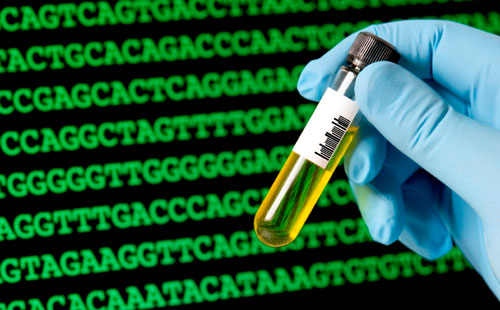
Whether or not we agree with it, we’re all pretty used to the idea of genetic engineering. Our food chain is full of GM crops and pretty soon we may be genetically modified ourselves. But synthetic biology takes the idea even further.
Instead of merely modifying existing organisms, synthetic biology aims to create entirely new organisms, often for large-scale industrial or agricultural use. Speaking at this year’s South by South West (SXSW) Interactive festival, a panel of experts discussed the state of this rapidly evolving field.
Christina Agapakis, a synthetic biology academic from the University of California in Los Angeles, explains that the field is so new that it doesn’t even have a dictionary definition yet. She quotes Jim Collins, a biomedical engineer from Boston University who coined the phrase “genetic engineering on steroids”.
But where genetic engineering involves moving small numbers of genes between organisms, synthetic biology is much more radical. It not only involves moving large numbers of genes between organisms, but also uses principles from both computer science and traditional engineering.
In synthetic biology, “parts” of DNA are literally what they sound like: functional units that can be plugged together to create useful structures. Some of them are like switches that turn genes on or off, while others have specific functions like producing a chemical.
MIT has a public-parts registry, which Agapakis describes as a “giant freezer for pieces of DNA” that can be used to engineer new organisms. These parts are all open source so that researchers can “mix and match” them freely.
So, what can these synthetic organisms do? Agapakis shows an example of a light-sensitive “film” made of billions of synthetic bacteria that change colour when exposed to light. Her example comes from the first International Genetically Engineered Machine (IGEM) competition held in 2004 — now an annual event aimed at encouraging the development of synthetic biology around the world.
More recent IGEM entrants have managed astounding feats. A team from Valencia University created a 96-pixel LCD-style “screen” using electrically sensitive yeast cells. Another team from Tokyo made bacteria that played Sudoku, and a team from Newcastle made a bacteria that fills cracks in concrete with a hard substance.
Patrick Boyle, a graduate student at Harvard Medical School, explains: “With biology, the software is the hardware. When you engineer a genome you’re essentially creating a self-replicating machine. It’s as though your iPad could make copies of itself.”
He shows an example of a biological “image processor” — a beefed up version of Agapakis’s earlier example — complete with cells that can do “edge detection” of the image they are capturing by communicating with each other. “The really cool thing here is that these cells are doing this in parallel — so with biology you can have billions of parallel processors.”
For Boyle, the possibilities of this technology extend beyond biotech’s traditional roles in industries like biofuel. “Engineered biology can help us solve a lot of the real problems we have now in fields like food, medicine and materials.”
The “engineering” part of genetic engineering has always been somewhat metaphorical, but in synthetic biology it’s entirely literal. Jason Kelly, founder of Ginkgo BioWorks, explains how they use engineering practices and tools to design, test and manufacture entirely new organisms.
The company puts a strong emphasis on staples of engineering such as computer-aided design (CAD), automation, unit testing and quality assurance. It has a bank of industrial laboratory robots that do most of the manual work, leaving the engineers to concentrate on perfecting the manufacturing and design processes.
Even Ginkgo’s supply chain is modelled on tradition. Engineers literally send an e-mail to a supplier requesting a genetic “part”. A while later a vial arrives with the required component and it’s fed into the production line.
As far as Kelly is concerned, the possibilities for the field are limitless. “Biology is a programmable engineering substrate that operates at the nanoscale. It’s essentially proven — we’re just building infrastructure to make engineering it predictable.”
What’s more, Kelly’s team only needs to produce tiny amounts of the new organism. Their customers then reproduce it at scale in their own facilities. “We’re essentially writing biological enterprise software which we then ship off to our customers who replicate it at scale.”
But it’s clear that this is more than just business for Kelly. He calls the end of oil “one of the fundamental challenges for our generation to solve”. And he counterpoints the trendy idea, espoused by Mark Andreessen, that software is eating the world. “You can’t eat software.”
If the brilliant and optimistic young people on this panel are anything to go by, synthetic biology will not just change the world irrevocably, it will also change the world for the better. We may not be comfortable with some of its ideas, but at least synthetic biology is in the hands of idealists. Let’s hope it stays there. — Alistair Fairweather, TechCentral
- Subscribe to our free daily newsletter
- Follow us on Twitter or on Google+ or on Facebook
- Visit our sister website, SportsCentral (still in beta)

